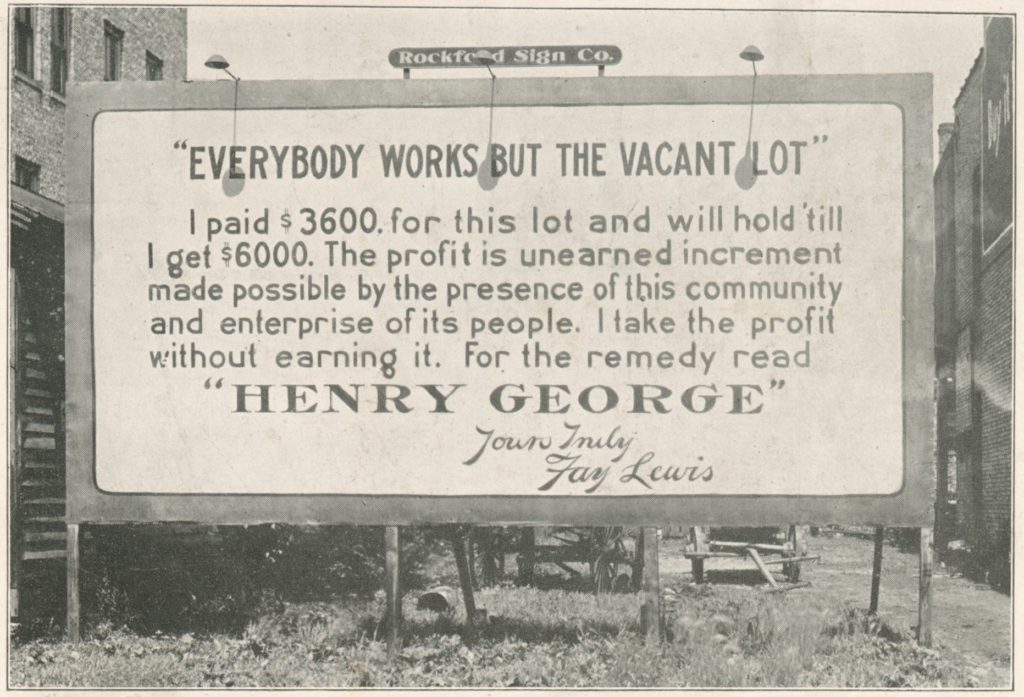Council Round-up: Affordable Housing, Party Poopers, and Storm Water Tax
by FORTHE Staff | Published July 27, 2018 in Journalism
11 minute readLocal Revenue to Afford Affordable Housing
Years of rising rents citywide have eaten away at more and more of residents’ paychecks, sinking many into poverty, overcrowded living conditions and sometimes homelessness. Currently, nearly half of all Long Beach residents—221,901—are considered rent-burdened, meaning they pay over 30 percent of their income toward housing. This figure exceeds the statewide rate of 38 percent of households with unaffordable housing costs.
Amid these conditions, the Council on Tuesday made its first overture toward finding a local source of funding for affordable housing production in the city. They voted unanimously, after two and a half hours of public comment and Council deliberation, to direct the city attorney’s office to develop potential mechanisms to fund the development of more income-restricted homes.
“This issue of housing affordability has become increasingly urgent in California with rising housing costs and limited housing supply taking a toll on communities across the state,” said Councilmember Rex Richardson (CD-9) who agendized the item. “Long Beach is not immune. Far too many of our residents are facing housing instability.”
Since the Redevelopment Agencies were dissolved in 2012, many other cities up and down California have already implemented alternative ways to locally supplement state and federal dollars for affordable housing, which have been dropping for years.
Annual state and federal funding for Long Beach dropped by nearly half in the eight years prior to 2016, to about $15.6 million.
In 2016, voters in the City of Los Angeles passed Measure HHH, a $1.2 billion bond to fund the development of 10,000 affordable supportive housing units.
The lack of such a robust funding source is one of the main reasons why the production of affordable housing has lagged behind other types of housing in Long Beach, Mayor Robert Garcia said during the meeting.
Since 2014, about four times more market-rate and upmarket units have been built than income-restricted units, according to the city’s latest housing element progress report. However, the state set the city’s affordable housing construction benchmark about 1,000 units higher than that of market-rate units.
It is not known what the city attorney and staffers will come back with—it could be a bond measure funded by a utility tax, a parcel tax, or some other mechanism altogether.
Richardson said his intention with the item was to start the difficult conversation about the “T-word,” likely referring to a tax hike. He also asked city staff to look into ways to convert “nuisance motels” into affordable housing and stop renter discrimination toward those with Section 8 vouchers.
A memo from the the Development Services Department late last year estimated that a $126 million 30-year general obligation bond would yield 1,000 affordable units.
Numerous residents from a downtown apartment complex who are facing steep rent hikes spoke publicly on the item—an unfortunate but common refrain at Council meeting these days.
The group of seniors, disabled people, and veterans from the Lexanna Apartments said some were facing rent hikes upwards of $500.
“So far I have never been homeless but the way it’s going it looks like I will be … But I will fight, I will fight for anyone,” said an 85-years old tenant of the building while addressing the Council.
Many of the tenants said they wanted the Council to consider renter protections and rent stabilization, policies that would provide more immediate relief to the city’s renters. It could be years before a shovel hits the dirt on any project funded by local affordable housing funds.
Even so, renter advocates say it’s a conversation that’s long overdue, though their support would hinge on how the money is used.
“If we are seriously talking about homeless prevention than the development and the local source of funds needs to be dedicated to [extremely low and very low incomes],” said Jorge Rivera of Long Beach Residents Empowered.
Rivera also worries that the funding measure could become a Trojan Horse for creating housing for the well-off. He points to one of the recommendations included in a report from the Mayor’s Affordable Housing Task Force last year to stretch the definition of moderate income from 120 percent of the area’s median income to 150 percent. Doing so, he says, could direct any new affordable housing dollars away from the city’s most needy.
“If they redefined it to 150 [percent] that means that they would be able to publicly say they were developing affordable units when they’re developing affordable units for people who are making $100,000 a year,” Rivera told FORTHE Media.
A spokesperson for the mayor said that specific recommendation is “meant to provide the opportunity to use local funds to support home ownership assistance programs and other housing solutions not supported by state grant funds.”
The timetable for when a local affordable housing funding measure could come before voters was not explicitly stated Tuesday, though in order for it to be placed on the November ballot, a special Council meeting would have to be held by the end of the month, Richardson said.
No councilmember made the motion needed to hold such a meeting.
Party’s Down?
The Council voted to request a draft for an ordinance that would hold property owners responsible for renting to tenants that get a little too rowdy a little too regularly.
The item was agendized by Councilmember Al Austin (CD-8), with Councilmembers Suzie Price (CD-3), Daryl Supernaw (CD-4), and Roberto Uranga (CD-7) also signing on.
“Party houses” that host “massive gatherings that disturb neighborhoods, block the public right of way, and threaten public safety,” as the ordinance request describes them, are currently punished under the city’s noise ordinance. Current penalties are largely directed at the resident who is throwing the party, but the councilmembers want an ordinance that would level penalties at the property owners as well.
The City of Los Angeles passed a similar ordinance in February.
The request cites an uptick in party houses in Long Beach. It goes on to say that these houses contribute to problems like “disorderly conduct, vandalism, public drinking, fights, and litter of neighborhoods.”
In part, the ordinance is meant to curb new unauthorized events that result from short-term rentals like Airbnb. However, the language of the item did not specify that any new penalties would apply only to short-term rental owners.
House parties have long been part of Long Beach’s music culture. They’ve been the breeding ground for countless local acts and launchpads for hallmarks such as Snoop Dogg and Sublime. Long a part of Sublime’s lore is an early show in Belmont Shore that went from house party to a near riot with partiers shooting fireworks at police officers and a helicopter being called out.
Long Beach Police Department Public Information Officer Arantxa Chavarria says that party houses are mostly dealt with by issuing citations. The LBPD maps known party houses and has public resource officers that deal with “problem areas” within their division among other capacities. They don’t have a set definition for “party houses” or for “massive gatherings.”
Tomisin Oluwole
Fragmented Reflection I, 2021
Acrylic on canvas panel
24 x 30 inches
Click here to check out our interview with Tomisin Oluwole, a literary and visual artist based in Long Beach.

Instead of gunking up our site with ads, we use this space to display and promote the work of local artists.
“It’s really a case by case basis,” said Chavarria.
Gary Hamrick, a member of the Los Cerritos Neighborhood Association, located in the Eighth District, says he supports the measure, while acknowledging that it is not a problem he has observed to be currently getting worse.
“Any large party that is out of control with respect to the neighbors is an issue,” Hamrick said in an email.
A 25-year-old Long Beach resident who didn’t want his name used and has lived at a few of the city’s party houses in the past acknowledged that unruly debauchery is certainly a part of the environment of these dwellings, but that they also foster community and expression, providing a collective space for non-commercial arts.
“[These spaces] are good for bands that are starting out,” he said. “People go see shows with bands that they wouldn’t necessarily have heard of. It’s also good for meeting people around town and to get a good sense of Long Beach culture and what’s going on.”
He says houses where young people cohabitate have become a necessity for many who would otherwise be forced out by the rising rents, especially artists and worries that spaces occupied by artist collectives that hold occasional events could be snuffed out by new enforcement measures targeting owners.
Asked if he thought tenants of the party houses where he’s lived would have been evicted had owners been fined each time a noise citation was issued, he said: “Yeah, definitely.”
New Tax Would Improve Water Quality in Long Beach (aka L.A. County’s Gutter)
The Council heard a presentation and received a report on a countywide parcel tax that is headed to the Nov. 6 ballot and would fund water quality improvement projects across the region. Such projects would aim to collect, clean, and conserve storm water.
The Los Angeles County Board of Supervisors voted 4-1 last week to place the measure on the ballot.
If passed by a two-thirds majority, the county would levy a 2.5 cents tax per square foot of “impermeable space” on private property. For the average single-family home in Long Beach, that would amount to an estimated $83.00 per year tax increase
Impermeable space refers to any surface such as concrete and rooftops where water cannot naturally seep into the earth. The tax would not apply to nonprofit organizations, public schools, and government buildings.
According to the presentation, an estimated $300 million would be raised by the tax annually, with 40 percent set aside for special projects in cities countywide, 50 percent divvied up among the region’s watersheds—of which Long Beach overlaps two—and another 10 percent going to the county to fund educational programs.
About 4,200 tons of trash and pollutants are carried by stormwater runoff from Los Angeles County to the ocean each year, Assistant City Engineer Alvin Papa said.
The measure would be exponentially beneficial for Long Beach since it is located at the base of the Los Angeles and the San Gabriel rivers and serves as the final resting place of much of the trash discarded upstream.
Because of that, any tax funds from this proposed measure spent upstream by other cities would end up improving Long Beach’s water quality.
“It’s heartening to hear how much the Council understands that this is a problem, especially for water quality and you hope that they explore the full opportunities and benefits of this measure,” said Lauren Ahkiam, Director of the Our Water LA campaign for the Los Angeles Alliance for a New Economy.
A report from the organization said that the parcel tax has the potential to create about 7,800 jobs in construction, maintenance, and operations over the next 30 years throughout the county.
At Tuesday’s meeting, Assistant City Manager Tom Modica stopped just short of recommending the Council publicly support the measure, but did nudge them in that direction, saying that the alternative is that the city goes it alone in trying to meet state stormwater pollution standards that would otherwise cost the city hundreds of millions of dollars over a matter of decades.
The city does not currently have a dedicated funding source for storm water management.
Although the Council seemed sympathetic to the measure, they chose to postpone the discussion until their Aug. 14 meeting, giving time for councilmembers to gather more information and discuss the proposed tax with their respective districts. Councilwoman Suzie Price (CD-3) specifically mentioned more time would be useful for her and her constituents.
At the Aug. 14 meeting, the Council will have the opportunity to officially endorse the measure.
“Special Benefits to the Special Taxpayer”
An annual tax increase on certain commercial property owners in Belmont Shore was approved Tuesday. The current rate of 12 cents will increase to 15 cents per square foot of property for businesses inside a special district next fiscal year. The new revenue will go towards “operating costs, consultant fees, and trustee fees,” according to Eric Romero, Project Manager with the Long Beach Economic Development Department.
The district took out a $3.7 million bond in 2009 that funded projects like a parking lot on Park Avenue and alleyway improvements. As of September 2016 a balance of $685,726 remained.
These property owners belong to a Community Facilities Districts in Belmont Shore, established by the council in 2007. Community Facilities District allow cities to issue special tax bonds to fund public projects. Property owners within the district pay in and the projects paid for are within that same area, offering “special benefits to the special taxpayer,” Romero said.
The passage of Proposition 13 in 1978, which limits the amount of property tax revenue that can be collected by the city, prompted the creation of Community Facilities Districts a decade later.
“Additional revenues may also cover potential unrealized assessments due to delinquencies,” Romero said.
Follow @LBCMtgNotes on Twitter for live updates during every City Council meeting.
Please support local grassroots media by donating here.
Help Us Create An Independent Media Platform for Long Beach
We believe that what we are trying to do here is not only unique, but constitutes a valuable community resource. We are dedicated to building a fiercely independent, not-for-profit, and non-hierarchical media organization that serves Long Beach. Our hope is that such a publication will increase civic participation, offer a platform to marginalized voices, provide in-depth coverage of our vibrant art scene, and expose injustices and corruption through impactful investigations. Mainly, we plan to continue to tell the truth, and have fun doing it. We know all this sounds ambitious, but we’re on our way there and making progress every day.
Here’s what we don’t believe in: our dominant local media being owned by one of the city’s wealthiest moguls or a far-flung hedge fund. We believe journalism must be skeptical and provide oversight. To do so, a publication should remain free from financial conflicts of interest. That means no sugar daddy or mama for us, but also no advertisements. We answer to no one except to our readers.
We call ourselves grassroots media not only because we are committed to producing work that is responsive to you, dear reader, but because in order for this project to continue we will also need your support. If you believe in our mission, please consider becoming a monthly donor—even a small amount helps!


 editors@forthe.org
editors@forthe.org




